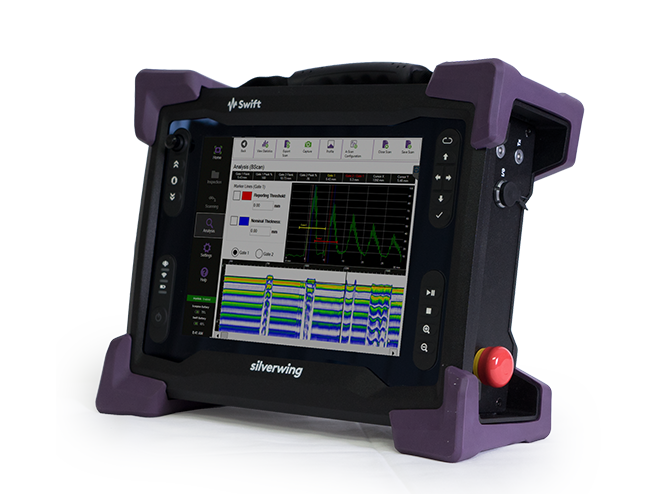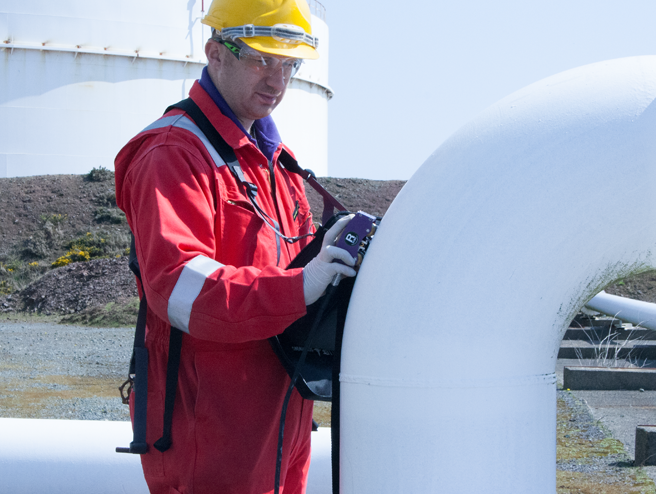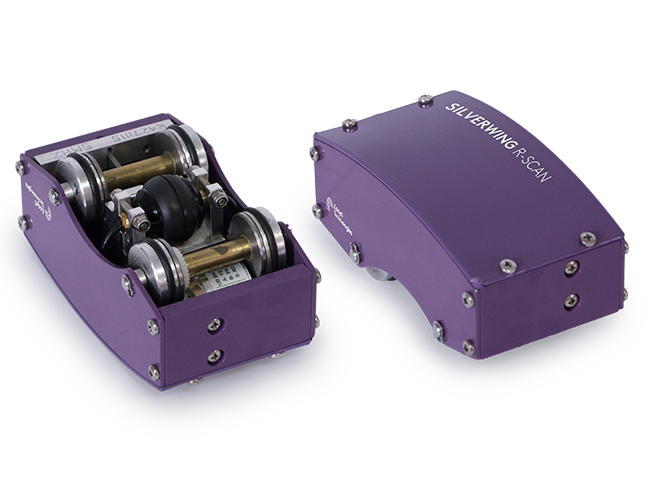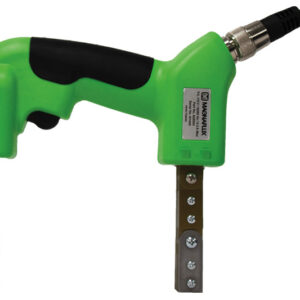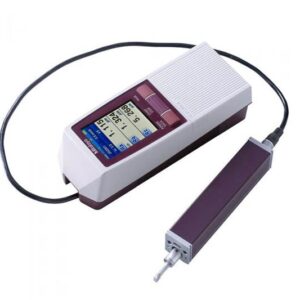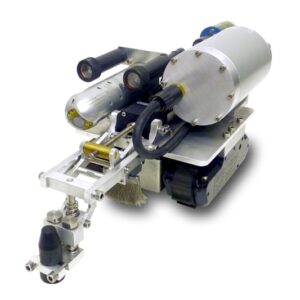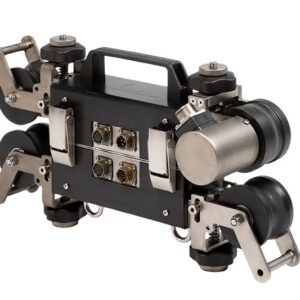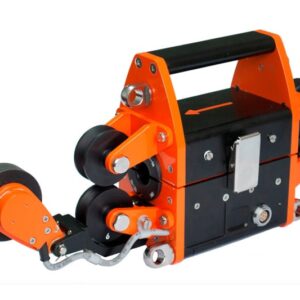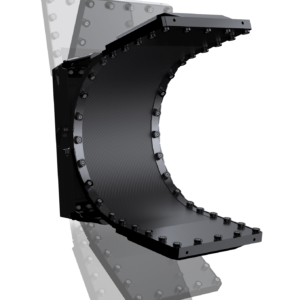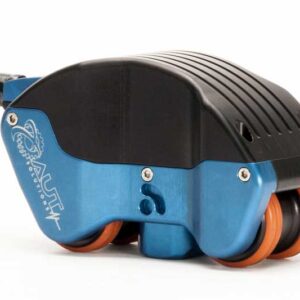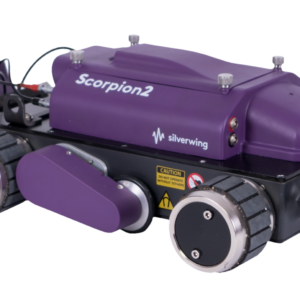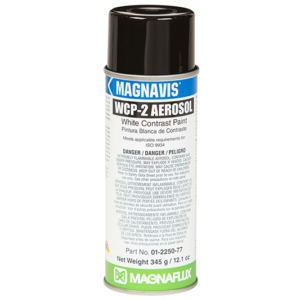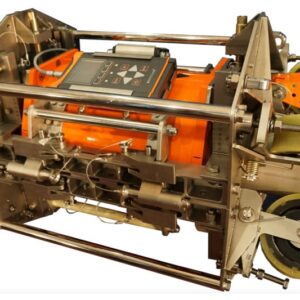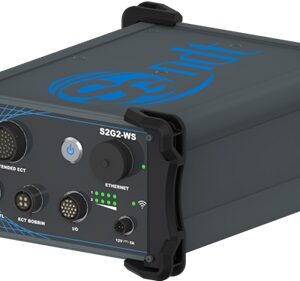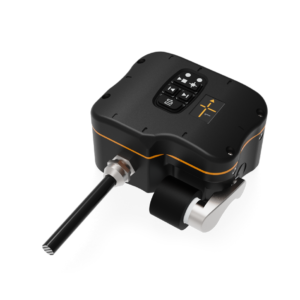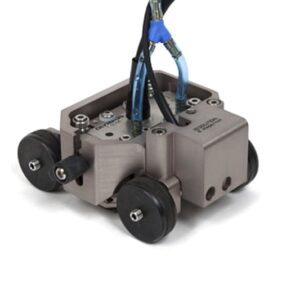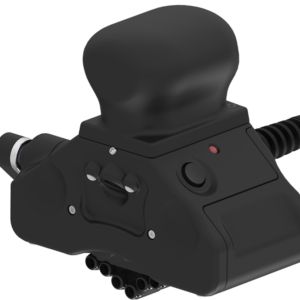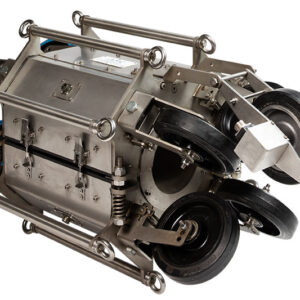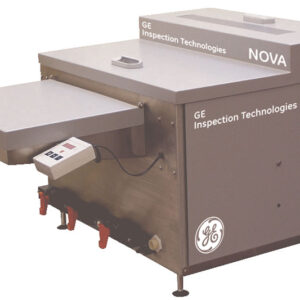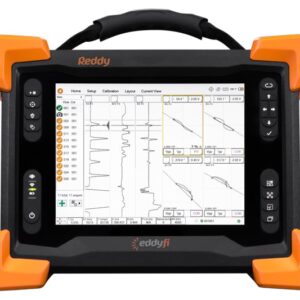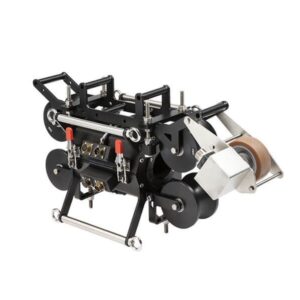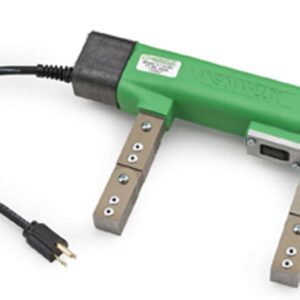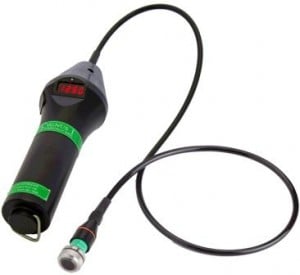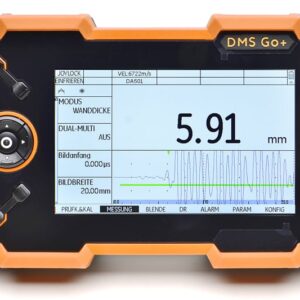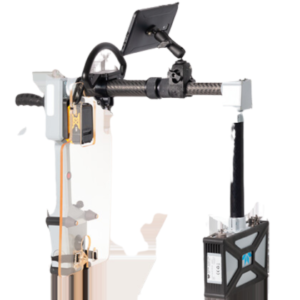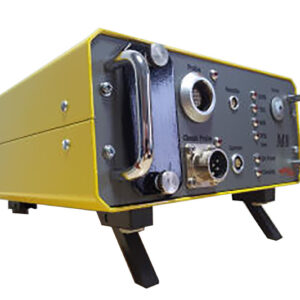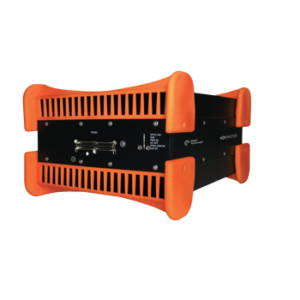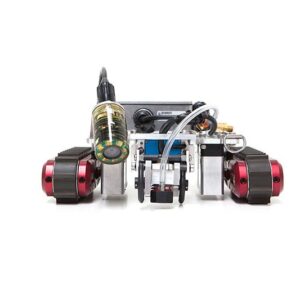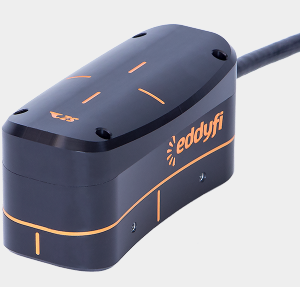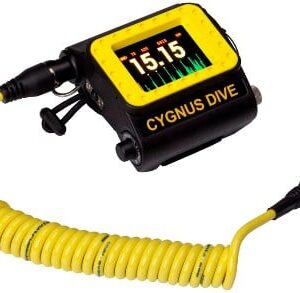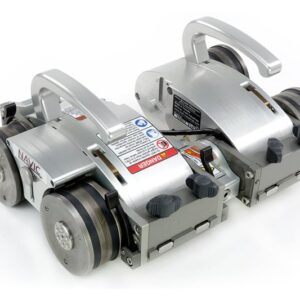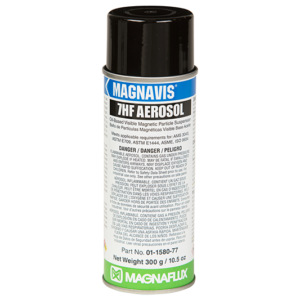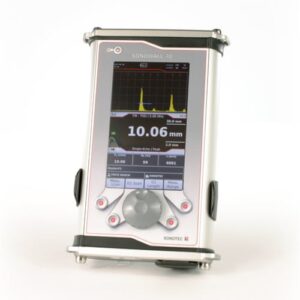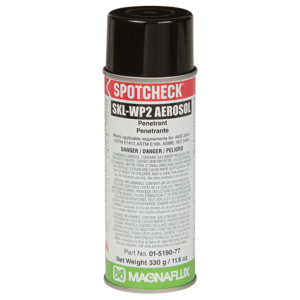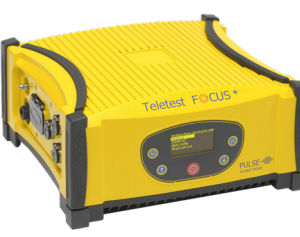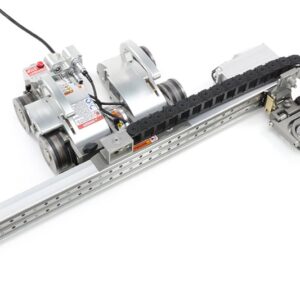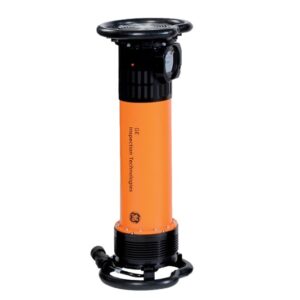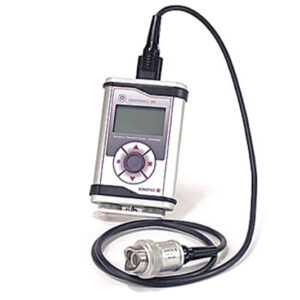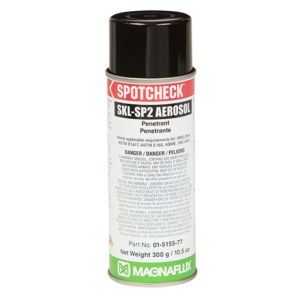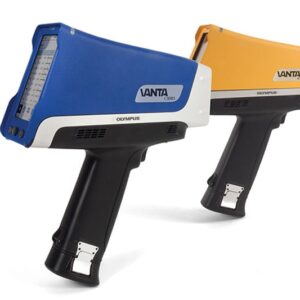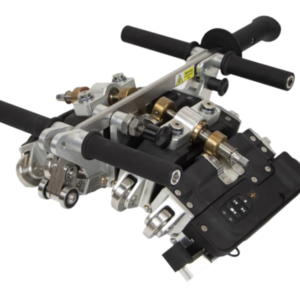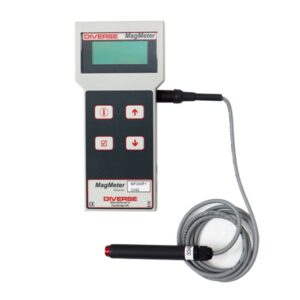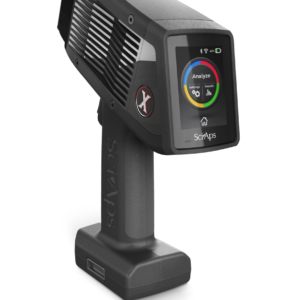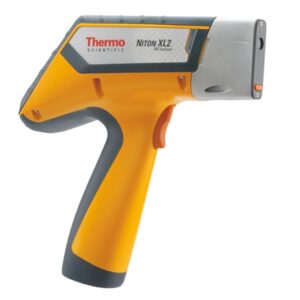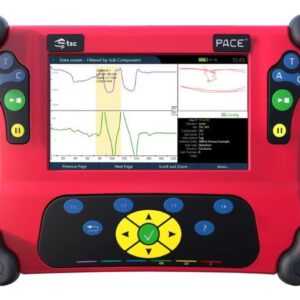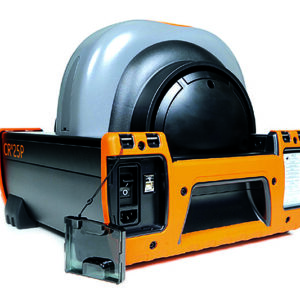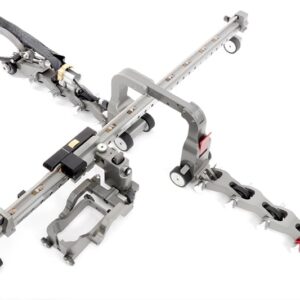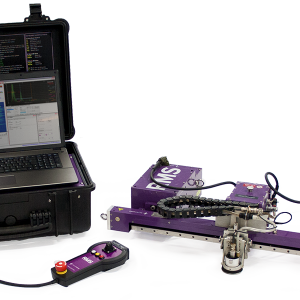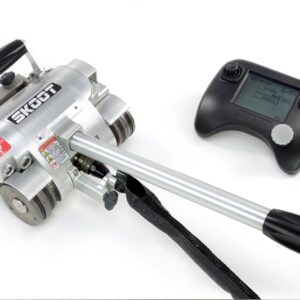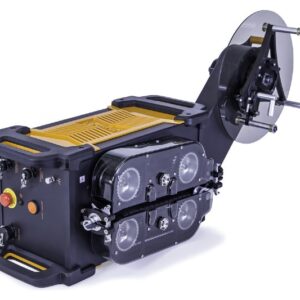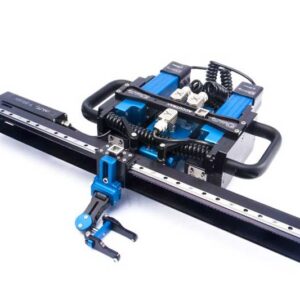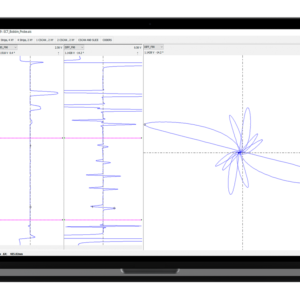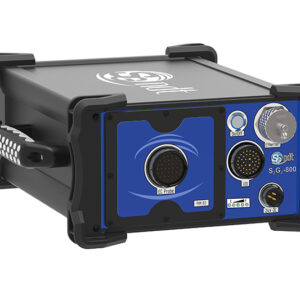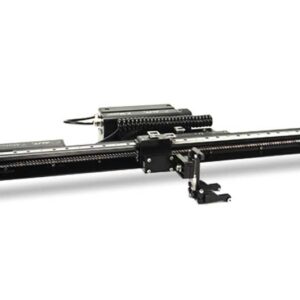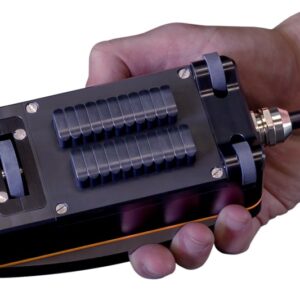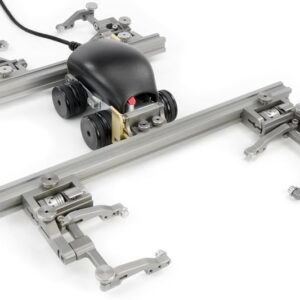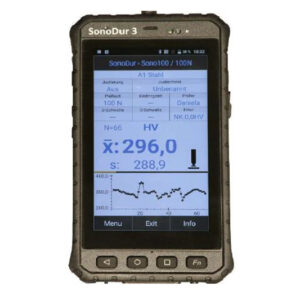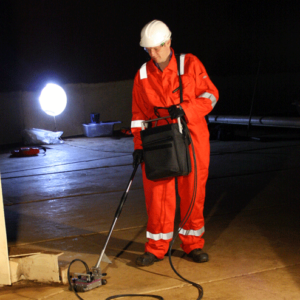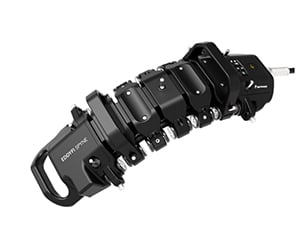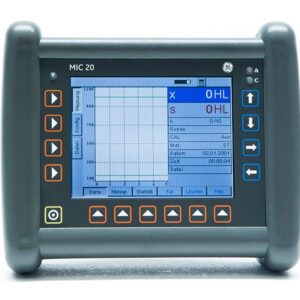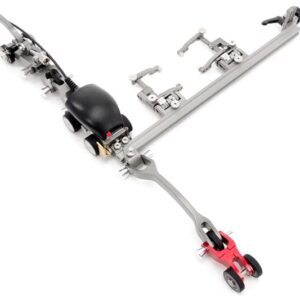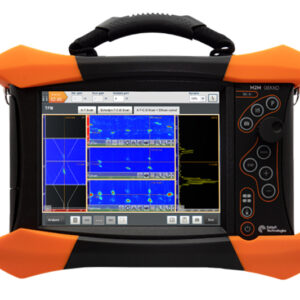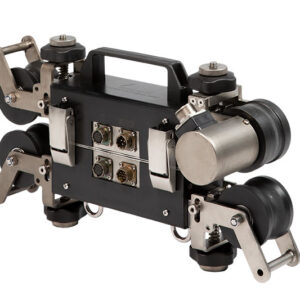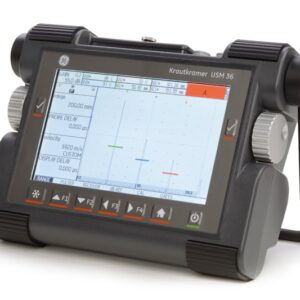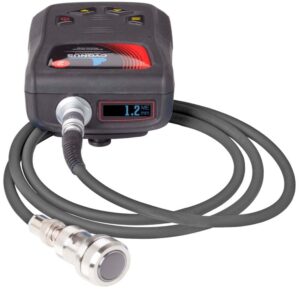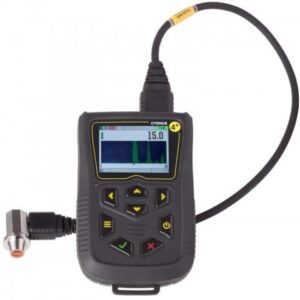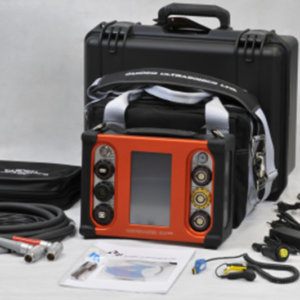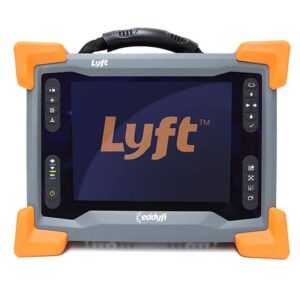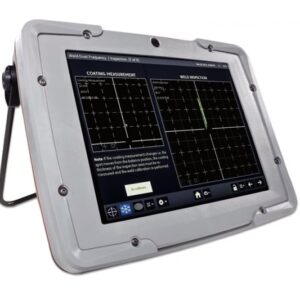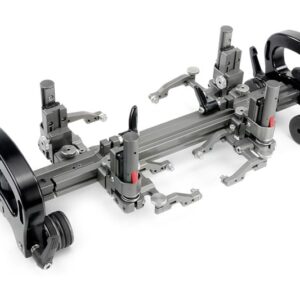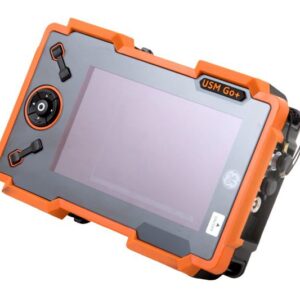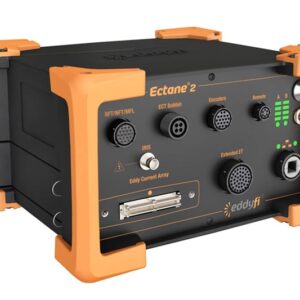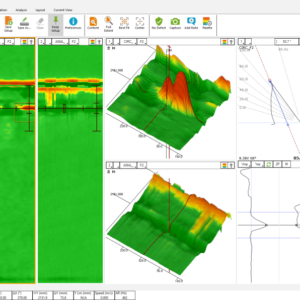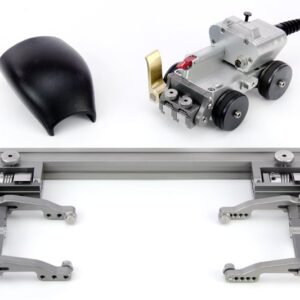Description
Designed for a wide range of components and with a high probability of detection, the R-Scan dry-coupled, handheld B-scan solution is perfect for ultrasonic testing (UT).
The System
Combining the R-Scan handheld, dry-coupled scanner with the Swift ultrasonic data acquisition instrument delivers a simple to use, battery operated, portable ultrasonic inspection system ideal for application ranging from 50 mm (2 in) up to flat plate. The software is packed with unique and intuitive features all design to improve productivity and user experience.
Probe Design
Designed to be used in remote locations and harsh petro-chemical environments, Silverwing’s unique dry-coupled ultrasonic wheel probe eliminates the need for couplant or a constant water supply. The probe, a dual crystal 5 MHz ultrasonic probe with a unique rolling probe face is capable of measuring material thickness ranging from 2.5 mm up to 100 mm (0.1 in up to 4 in).
Scanner
R-Scan scanning head is fitted with an encoder to provide accurate positional information during an inspection. Magnetic wheels assist when scanning vertically of if inverted by minimizing the possibility of encoder slippage.
Floating and Tracking Gate
A unique feature of the system is floating and tracking gates. The intelligent gates allows for a tolerance in the initial setup and deliver a more accurate inspection. The gates travels with the signal as it moves up and down, and from side to side, reducing the likelihood of incorrect or missing data, allowing for a more reliable and complete B-Scan inspection data set.
High Probability of Detection (POD)
Compared to traditional spot thickness measurement, R-Scan increases the likelihood of detecting corrosion by continuously records thickness measurements as the scanning head is moved over the inspection surface. The captured thickness information is displayed as an A-Scan trace, a digital thickness measurement, an amplitude B-Scan or a simple to understand thickness profile.
Flexibility
R-Scan is an ideal all-rounder for inspection on tanks and pipelines. It can be used on a variety of components ranging from 50 mm (2 in) diameter up to flat surface with material thickness ranging from 2.5 mm up to 100 mm (0.1 in up to 4 in).
Swift
Swift has a large 26.4 cm (10.4 in) non-reflective, touchscreen display. Its magnesium alloy casing is tough, rated to IP65 and designed to protect the instrument against dust and water. With a 3 mm (1/8 in) strengthened glass display, it’s the perfect instrument for harsh environmental conditions. Supplied with two lithium-ion, hot-swappable batteries the instrument allows for a full day’s work. Swift has an optional harness to support the use of the system for longer period of time. The adjustable stand, the top handle, and four corner anchor points make it practical for on-site inspections.
Data Acquisition Software
The Swift software controls both the Scorpion2 and R-Scan. The intuitive software is easy to use with several advanced features resulting in high quality ultrasonic inspection data. Operators are guided through a simple process of entering the inspection details followed by ultrasonic setup. Adjustments can be made using the touch screen or hard buttons located on the Swift.
Data Collection and Analysis
Real time A-Scan and B-Scan data is displayed during the scan. Once a scan is completed the operator can analyse the results or simply save the scan and move onto the next scan. Scan analysis is made simple with active A-Scan and B-Scan display, placing the cursor over any part of the B-Scan window shows the A-Scan trace and thickness measurement for that specific location. An adjustable threshold indicator can be displayed over the profile view, helping to identify reportable defects at a glance. The full amplitude view helps to characterize wall loss, allowing for a more detailed analysis and accurate corrosion assessment.
Reporting
Complete inspection data can be exported as a CSV or Excel file for statistical analyses and reporting. If preferred just A-Scan and B-Scan views can be exported as images files. For advanced reporting data can be exported as a CMAP compatible CMX file. CMAP software stiches all the scans automatically based on the export values, providing a complete overview of the inspection.
Specification
R-Scan
Dimensions (W×H×D)
65 x 54 x 122 mm (2.5 x 2.1 x 4.8 in)
Weight
1.8 kg (4 lb)
Umbilical cable length
3 metres (10 feet)
Max scan speed
Manual
Adhesion
Magnetic wheels and hand pressure
Transducer
5MHz twin element Dry-coupled
Near-surface resolution
2.5 mm (0.1 in)
R-Scan Capabilities
Minimum diameter
50 mm (2 in)
Maximum diameter
Flat plate
Minimum material thickness
2.5 mm (0.1 in)
Maximum material thickness
100 mm (4 in)
Maximum scan length
50 m (164 ft)
Minimum Surface temperature
0 °C (32 °F)
Maximum Surface temperature
80 °C (176 °F)
Swift
Dimensions (W×H×D)
355×288×127 mm (14.0×11.3×5.0 in)
Weight with batteries
6.6 kg (14.5 lb)
Weight without batteries
5.7 kg (12.5 lb)
Power requirements
100–240 VAC, 50–60 Hz
Power supply
Direct VAC or onboard batteries
Batteries type
Li-ion, rechargeable, DOT compliant
Battery typical life
6–8 hours
Display
26.4 cm (10.4 in), LCD touchscreen
Non-reflective (AR coating)
Anti-fingerprint (oleophobic coating)
3 mm (1/8 in), strengthened glass cover
Storage
SSD, 100 GB
Connectivity
Gigabit Ethernet, Wi-Fi, Bluetooth®, USB 2.0 (×3)
IP rating
Designed for IP65
Ambient temperature
0–40 °C (32–104 °F)
Ambient humidity
95 %, non-condensing
Ultrasonic
Internal pulser/receiver
1 x Tx/Rx, 1 x Tx (for pitch and catch)
Transducer frequency
2.25–20 MHz
Max. pulsing rate
Application dependant capable up to 20 kHz
Pulse voltage
-75 to -200 in step of 25 volts
Pulse width
25 ns to 225 ns in 2.5 ns increment
Damping
50Ω
Receiver gain
8 to 70 dB, 40 dB TCG Range
Filter, Waveform
FIR filter, Full rectify
Sampling rate
100 MHz
Resolution
16 bits
Waveform length
up to 16328
Trigger source
Internal or Encoder-based
Transducer range
2.25–20 MHz
Post trigger delay
8 to 141006540 samples in 1 sample step

